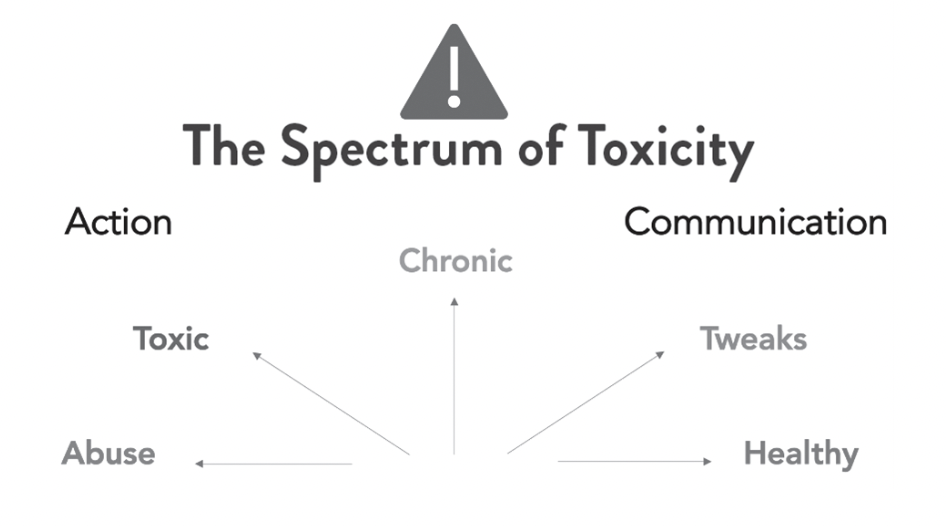
by Dr. Alison Cook | May 7, 2024 | Life Advice, LO Library, Mental health, Wisdom
As a clinician and as a human, I’ve learned that my own flurry of conflicting thoughts is a sign that I need to gently slow down the pace of my mind. It’s a signal to take a deep breath to ease the firing of my nervous system and settle into the groundedness of my body.
It’s a cue that the situation in front of me is complex and that I need to pay close attention so that I don’t rush into an assumption that does not adequately address the reality of what’s happening. In other words, it’s an invitation to spend some time hanging out at the Crossroads. In this case it meant I needed to invite Chloe to join me there before she rushed into a high-stakes pseudo solution.
And so I said to Chloe a phrase that has become my mantra these past twenty years: “Could we pause here for a moment? We need to start naming some things.”
Like many of us when we experience conflicting thoughts or mixed emotions, Chloe was trying to jump right into a solution without first understanding the complexity of the problem she was facing. She hadn’t yet uncovered what was underneath the resentment she was feeling. She couldn’t get to a better place if she didn’t first stop and name what was happening.
Start with Yourself
When we’re tangled up inside, it’s hard to maintain perspective. Complicated or painful situations detonate conflicting thoughts and feelings that can feel chaotic and overwhelming. Often one strong emotion is colliding with another equally strong one. You might feel anger, but then you feel guilty about feeling anger. Or you might feel hurt, but then you feel anxious about taking action. Your reactions might be related to a current experience, or they might be influenced by past events. Shame may enter in and you criticize yourself, further complicating an already complicated mix.
Your nervous system gets activated, and you tend to react based on prior conditioning or automatic responses rather than thoughtful, conscious awareness. It’s incredibly challenging to respond wisely to what’s happening outside of you until you acknowledge and patiently work through the turmoil inside of you. The very first step is to stop and notice what you’re experiencing: Name what’s hard. Start with yourself.
Naming is a profound act of noticing, acknowledging, and validating the truth of what you’re thinking and feeling at any given moment.You stop anxiously ruminating, impulsively reacting, or grasping for a solution and start paying attention to what’s happening inside your own mind. What am I feeling right now? What’s happening inside? Naming the truth of your inner experience is a powerful step towards clarity. It empowers you to make a wiser choice.
The simple act of stopping to notice what you’re thinking and feeling—without criticism, judgment, or shame—brings calm to the chaos inside. You shift out of overdrive and into a neutral gear, creating a pause where you can get curious about what’s happening. Imagine you’re at a gathering and you begin to feel overwhelmed, left out, or tempted to lash out at someone. What if, instead of berating or gaslighting yourself—instead of telling yourself you shouldn’t feel that way—you took a deep breath and asked yourself, What am I experiencing right now?
Am I hurt? Sad? Scared?
Is someone being cruel?
God, help me understand what’s happening in this moment.
Instead of reacting or overreacting to the situation in front of you, you begin to gently name the truth-pieces inside of you.
Sometimes, it’s hard to figure out a name for what you’re experiencing right away, especially when you’re facing a complicated situation that evokes complicated thoughts and feelings. That’s okay. Pausing to notice This feels complicated or This feels hard is often the very first step in naming. The most important act at this juncture is to give yourself permission to notice what you’re experiencing without shame.²
The process of naming isn’t always definitive, especially at first. It reminds me of trying to come up with a name for remote hiking trails that are off the grid in my home state of Wyoming. As my family and I discuss how to name where we’re going in case of an emergency, the conversation goes a little like this: “If you head out about five miles east toward Sibley Lake, you’ll see a turnout on your left. It’s just before the long hill that descends toward Steamboat Rock. Drive a little ways down that bumpy dirt road. Don’t take the short road to the right—it’s the longer one that forks to the left! At the bottom of it, you’ll find the trailhead.” It takes a few iterations to find a name sometimes!
Likewise, it takes a few tries to give inner experiences an accurate name. It means slowing yourself down, describing what’s happening as honestly as you can, and identifying what you’re thinking and feeling in reference to other landmarks in your life. For instance, when I asked Chloe to name what was happening inside her mind as she thought about her marriage, she paused and reflected. She then answered, “It feels so foolish—but I feel left out, completely rejected. It’s like I’m in fifth grade again and no one will play with me. I hated feeling that way!” Her husband’s behaviors—whether intentional or not—had exposed a trail leading to a painful memory inside her mind. Naming those feelings became the starting point for our journey together.
Naming is like dropping a pin on a map that labels the starting point of where you are. It requires patience and self-awareness. It means asking others to wait while you take your time to get it right: “I’m trying to name what’s going on with me. I’m not sure how to say it yet.” But with care and attention, you’ll identify a name that not only you but other people will understand: “Aha! This is where I am.”

by Dr. Alison Cook | Feb 28, 2023 | Life Advice, Relationships
As you consider your relationships, recognize that healthy behavior and toxicity exist on a spectrum. Very few people are totally toxic, and no one is entirely healthy. This means that expressing your voice requires nuance and dexterity.
You don’t want to come down with a hammer when a flyswatter is needed. You also don’t want to let someone who is using toxic strategies twist your best efforts.
There’s no one-size-fits-all response when it comes to using your voice and setting healthy boundaries in your relationships. As you consider the many ways to respond to others, consider the example of Jesus.
Jesus navigated through complex relationships with unbelievable skill. Sometimes he left people in order to nourish his own soul. Sometimes he headed straight into hard conversations. Jesus was full of compassion, and he also held people responsible for their behavior. Jesus stood up to bullies, even as he ached for them. He didn’t shy away from calling out people who were hurting others. Jesus even got annoyed with his friends, and he let them know when they’d let him down.
Sometimes Jesus expressed grace. Sometimes he expressed anger. But most of all, Jesus spoke up on behalf of those who were hurting. And you, dear reader, may be the one who is hurting. Sometimes a kind word is needed. Grace will mend the hurt. Other times you will need to advocate for yourself and speak firmly. Finally, there will be times when it’s wisest to walk away entirely. In these situations, the best way to use your voice is to show what you mean through your actions.
How do you gauge what response is required? First, assess where your particular situation falls on the following spectrum.

People who are healthy fall on the right side of this spectrum. These are people with whom communication is possible. You can discuss conflicts or ruptures that occur within your relationship. They’re aware of their blind spots and have a strong sense of self. There is room for conversation and negotiation of boundary lines. In fact, the ability to communicate constructively on behalf of what you need is what makes a relationship healthy. You might not see eye to eye on every single thing. You might even disagree or experience disappointment. For the most part, though, you can arrive at a place of harmony as you negotiate the boundaries of the relationship.
Next, let’s look at the middle of the spectrum. These are the folks who consistently commit boundary fouls but who also have good qualities. For example, you may have a mother-in- law who genuinely cares about your children. At the same time, she won’t respect the boundaries you’ve set when she interacts with them. She’s not toxic, and you want her in your life. But you may have to constantly remind her of certain boundaries or develop workaround solutions to manage behaviors that just won’t change. Likewise, you may have a dad who only talks about himself, or a friend who likes to gossip. They’re not toxic and you can find ways to be together, but your ability to go deep may be limited.
Next, there are folks who show up on the left side of the spectrum. Sadly, these individuals are living out of the worst of who they are. Their choices in response to their painful stories have gotten the better of them, making it impossible to engage with them in healthy ways. As a result, they may demonstrate toxic behaviors toward you that cause great harm. For example, they might attempt to belittle or criticize you, manipulate your decisions, or guilt-trip you. They don’t want what’s best for you. They are worried only about themselves.
Finally, there’s the extreme left side of the toxicity spectrum, which represents those who are abusive. Such people may intentionally try to harm you physically, damage you with words, or gaslight you to make you feel crazy. Folks who are spiritually abusive will try to get you to think God is on their side. These actions on the left side of the spectrum are major boundary violations. Their behavior cannot and should not be tolerated.
Here are some examples of strategies someone might use to gaslight, control, or manipulate you.
GASLIGHTING
- “I didn’t borrow your phone. Why are you always blaming me?” (In fact, they did borrow the phone.)
- “I’m not drinking! You have trust issues.” (In fact, they have started drinking again.)
- “I never said those things. You must have misheard me.” (In fact, they did say those things.)
- “I’m not mistreating you. You have an issue with authority. You need to pray and ask God to change your heart.” (In fact, they are mistreating you.)
MANIPULATION/GUILT-TRIPPING
- “You don’t really care about me.”
- “I know how busy you are; I guess you don’t have time for me.” • “If you really loved me you’d . . .”
- “If you really loved God, you’d . . .”
CONTROLLING
- “I forbid you to see that therapist/friend/family member anymore.”
- “If you break up with me, I’ll tell everyone who you really are.”
- “You can’t survive without me. I own the finances.
- “God has given me authority over you.”
Make no mistake, these are big red warning lights. You can’t change the other person. So, you must learn to protect yourself. When it comes to toxic behaviors—words won’t work. With toxic behaviors, very word you say is going to get stuck in a web of confusion. In these cases, actions speak louder than words ever will.
 To learn more about how to break free from painful patterns, mend your past, and discover the healthy relationships you crave, check out my new book, The Best of You.
To learn more about how to break free from painful patterns, mend your past, and discover the healthy relationships you crave, check out my new book, The Best of You.
For over two decades, psychologist and author Dr. Alison Cook has earned the trust of thousands of women through her practical, wise, and compassionate approach to becoming a whole person. Her most recent book is The Best of You: Break Free from Painful Patterns, Mend Your Past, and Discover Your True Self in God (Thomas Nelson).
Originally from Wyoming, Alison studied at Dartmouth College, Denver Seminary (MA), and the University of Denver (PhD), where she specialized in the integration of theology and psychology. She and her husband, Joe, are the parents of two young adult children, and are currently based in Boston.





















